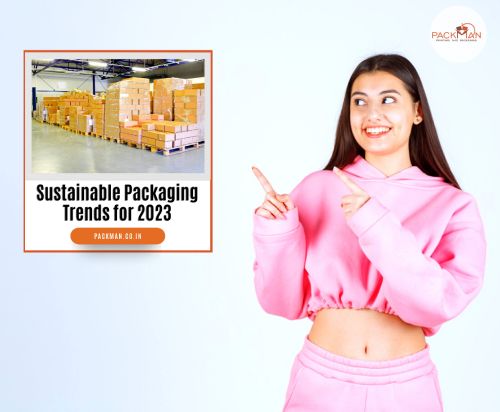As the year 2023 is here, there is no better time to examine the effects of sustainability on product packaging than now. There has been a shift toward more environmentally-friendly packaging solutions over the last few years, and this trend will continue in 2023.
We are expected to see the trends rising throughout the year as shared by Packman Packaging India’s top corrugated box manufacturers and suppliers.
Lightweight
This packaging trend will possibly gain even more traction in 2023. Lightweighting lowers the amount of material used to make packaging, enhancing resource and energy consumption. More companies will possibly adopt lightweight bottles, jars, and closures in the year ahead. This process not merely improves sustainability but saves money by using less material.
There are a few challenges linked with lightweight that companies require to solve before adopting this method. A trusted partner should determine the correct weight of material or packaging will be too light. When done correctly, lightweight can effectively solve the waste dilemma.
Downsizing
Downsizing is similar to lightweight since it uses less material compared to the originally-sized package. However, this technique could frustrate consumers when they get fewer products because of the smaller package sizes.
Downsizing could be a good choice for companies manufacturing products with limited shelf lives that degrade rapidly because of perishable ingredients. Smaller package sizes could decrease product and package waste in these scenarios without annoying your consumers.
Bio-based materials
Bio-based materials used for packaging are obtained from natural organisms, like crops and algae. Using these materials will improve the production of chemicals, biofuels, and plastics and support companies minimize their environmental impact.
Refillable packaging
Refillable packaging consists of recyclable materials that brands can refurbish or re-manufacture when your consumers return the empty packaging, making it a valuable packaging choice for companies that want to decrease their environmental effects.
There are also cost savings when using this form of packaging because businesses can reuse it several times. More companies are also incentivizing consumers through refill programs. Customers can return their original plastic packaging in place of a refill at a discounted price.
Wash-off labels
Some companies invest in easily-recycled plastics such as PET for consumer products but use non-compatible labels, meaning consumers require to separate these components prior to recycling the packaging. Using bio-based inks and adhesives for labels that comfortably wash off will make containers made from PET and other plastics more recyclable.
Another labelling trend in 2023 would be soy-based and vegetable-based inks that are good for the environment than traditional inks but still form impressive graphics.
Levels of recycled plastics
Incorporating several levels of recycled plastics in product packaging needs less energy, conserves natural resources, enhances landfill space, and promotes sustainable results. These plastics include the following:
- Post Consumer Recycled Resin (PCR)
- Post Industrial Resin (PIR)
- Ocean Bound Plastic (OBR)





